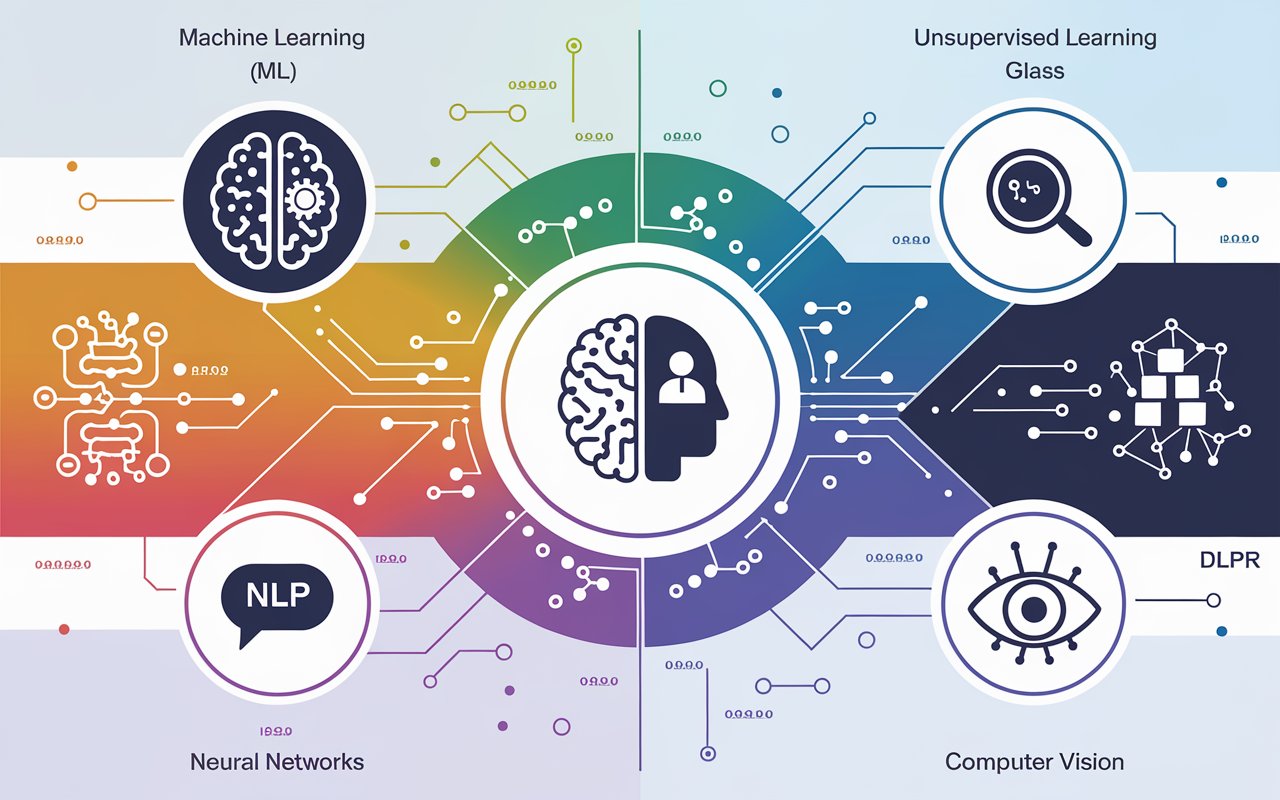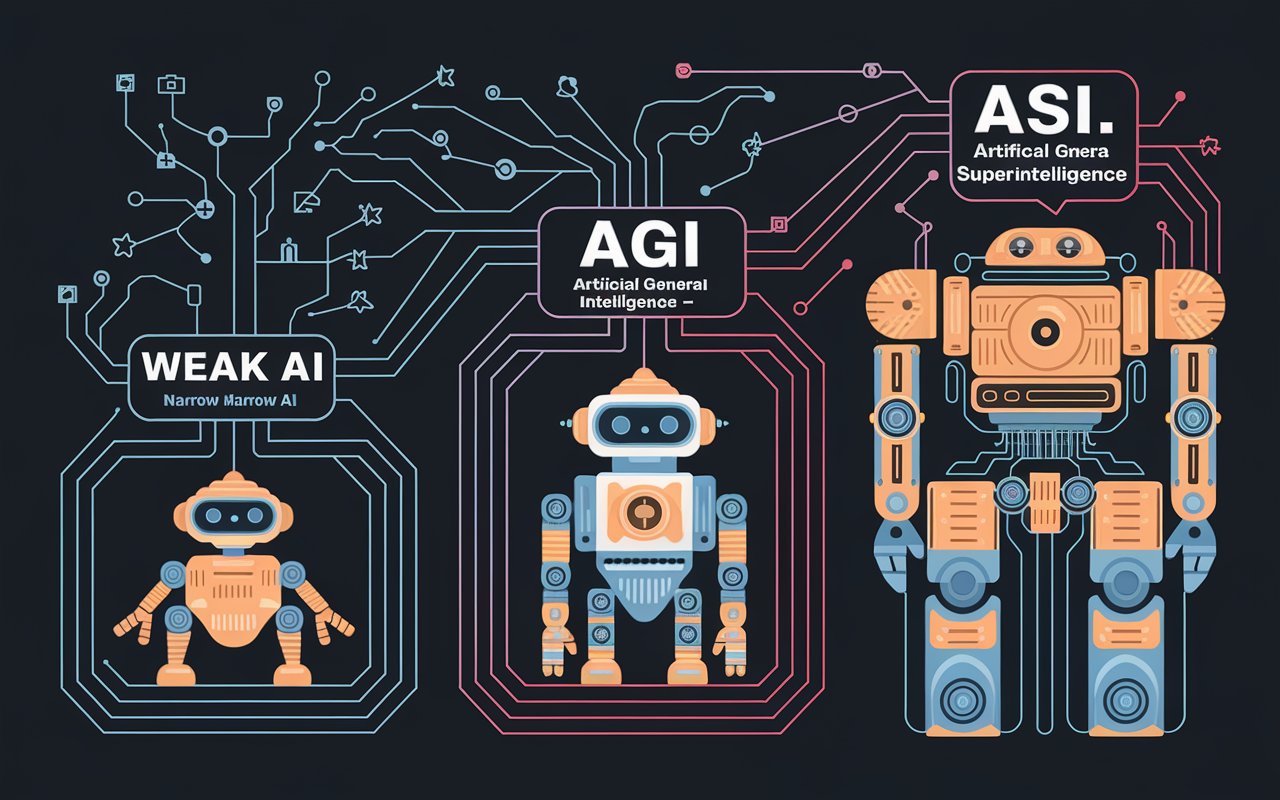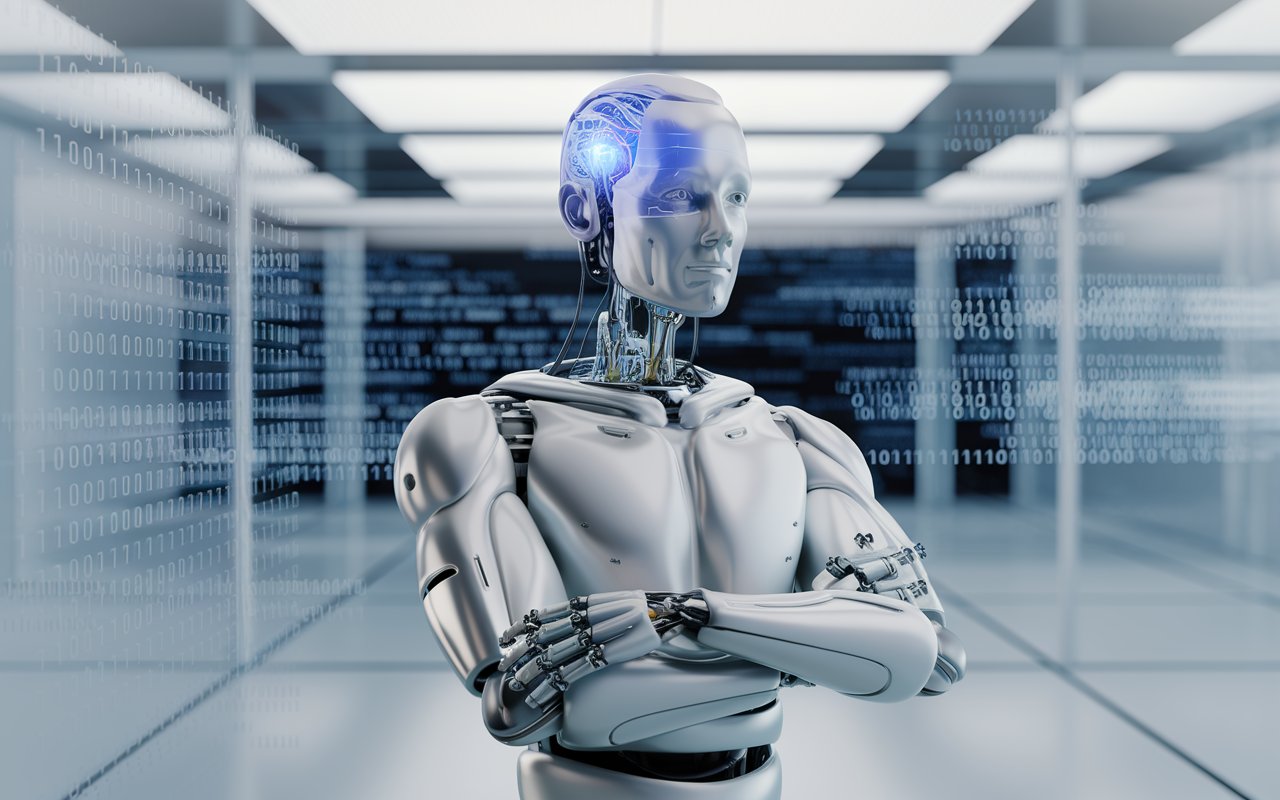-
Introduction to Artificial Intelligence (AI)
Artificial Intelligence (AI) is a transformative technology that enables machines to mimic human intelligence. From recognizing objects and understanding language to predicting outcomes, AI allows computers to perform tasks that typically require human cognition. The foundation of AI lies in its ability to process vast amounts of data, learn from it, and apply that knowledge to make decisions and solve problems.
At its core, AI is about creating systems that can think and learn, evolving over time to become smarter and more efficient. AI has already found applications in almost every industry, automating repetitive tasks, analyzing data faster than humans can, and improving decision-making processes.
-
Why Is Artificial Intelligence Important?
Artificial Intelligence has become integral to modern life and industry because it allows machines to handle tasks that are time-consuming or too complex for humans. Here’s why AI is so important:
- Efficiency: AI systems can process and analyze large amounts of data in real time, providing faster insights than humans. This is especially useful in industries like finance, healthcare, and manufacturing, where quick decisions based on data are crucial.
- Automation: AI automates repetitive and mundane tasks, freeing humans to focus on more strategic and creative work. In customer service, for example, chatbots powered by AI handle basic queries, allowing human agents to address more complex issues.
- Improved Accuracy: By learning from historical data and recognizing patterns, AI systems can make highly accurate predictions and decisions. In healthcare, AI is used to diagnose diseases, often with greater precision than human doctors.
- Adaptability: AI systems continuously learn and improve over time. As they process more data and encounter different scenarios, they adapt, becoming more accurate and efficient in their decision-making.
AI is particularly valuable because it bridges the gap between human limitations and machine capabilities, offering a new frontier in problem-solving and innovation.
-
How AI Works: Understanding the Basics
At its most basic level, AI functions by processing data through algorithms. Here’s how it works step by step:
- Data Collection: AI systems require massive amounts of data to learn. This data is often gathered from various sources such as databases, sensors, or online inputs.
- Training Models: Using machine learning algorithms, the AI system is trained on this data. During the training process, the system analyzes the data and looks for patterns. This stage helps the AI learn how to perform specific tasks based on the input data.
- Pattern Recognition: After training, the AI system applies its learned knowledge to new data by recognizing patterns. For example, a facial recognition AI will analyze new images by comparing them to the patterns it learned during training.
- Decision Making: Once the AI has recognized patterns, it can make decisions or predictions based on the input data. For instance, AI used in self-driving cars can decide when to brake or accelerate based on real-time data from its sensors.
- Continuous Learning: As the AI system encounters new data, it continues to learn and improve. This process, known as machine learning, allows AI to adapt and evolve without needing to be explicitly programmed for every new scenario.
-
Key Components of AI Technology
Several technologies enable AI systems to function. Below are the key components that power modern AI:
-
Machine Learning (ML)
Machine learning is the backbone of AI. It involves teaching machines to learn from data, without being explicitly programmed. Machine learning algorithms process historical data to recognize patterns and improve predictions over time. There are two main types of machine learning:
- Supervised Learning: In this approach, the system is trained on labeled data (where the correct answers are provided), allowing it to make predictions on new data.
- Unsupervised Learning: In this case, the AI analyzes unlabeled data and finds patterns or relationships without human guidance.
- Neural Networks
Neural networks mimic the structure of the human brain, with layers of interconnected nodes (neurons) that process data. These networks are powerful tools for recognizing complex patterns and are commonly used in image recognition and language processing. They work by adjusting the “weights” of connections between neurons, improving their ability to recognize patterns over time.
- Deep Learning
Deep learning is a subset of machine learning that involves multi-layered neural networks. These networks go “deep” into the data, processing it in highly intricate ways, enabling AI to handle complex tasks such as voice and facial recognition. Deep learning algorithms are critical in technologies like self-driving cars, where they process vast amounts of real-time data to make split-second decisions.
- Natural Language Processing (NLP)
NLP enables AI systems to understand, interpret, and generate human language. It combines linguistics, computer science, and deep learning to allow machines to communicate with humans. NLP is used in applications like virtual assistants (Siri, Alexa), chatbots, and language translation.
- Computer Vision
Computer vision allows AI to process and interpret visual data such as images and videos. By analyzing the pixels in an image, AI can recognize objects, faces, and scenes. This technology is essential in applications like facial recognition systems, autonomous vehicles, and medical imaging.

Types of AI: Weak AI, Strong AI, and Beyond
AI can be classified into different types based on its capabilities and functionality:
- Weak AI (Narrow AI)
Weak AI refers to systems designed to perform specific tasks within a limited context. These systems often outperform humans at specific tasks but lack general intelligence. Examples of weak AI include voice assistants like Siri, recommendation engines on Netflix, and facial recognition systems. All current AI systems fall into this category.
- Strong AI (Artificial General Intelligence – AGI)
Strong AI, or AGI, represents machines that have human-like intelligence and can perform any intellectual task that a human can. AGI would be adaptable, able to learn from experience, and capable of solving unfamiliar problems without specific programming. AGI does not yet exist, but it is a long-term goal for AI researchers.
- Artificial Superintelligence (ASI)
ASI goes beyond human intelligence, theoretically surpassing humans in all aspects, including creativity, problem-solving, and decision-making. While ASI is still a futuristic concept, it represents the ultimate potential of AI technology, where machines could operate with greater capability than humans. However, ASI raises ethical concerns about control and safety.

- Reactive Machines
Reactive machines are basic forms of AI that can respond to specific inputs but lack memory or the ability to learn from past experiences. IBM’s Deep Blue, which defeated world chess champion Garry Kasparov, is an example of a reactive machine.
- Limited Memory AI
Limited memory AI systems can use past experiences to inform current decisions. Self-driving cars are a perfect example, as they use data from previous trips and real-time sensor readings to make decisions like when to brake or turn.
- Self-Aware AI
Self-aware AI is a speculative concept that envisions machines becoming conscious and aware of their existence. While it remains a futuristic idea, self-aware AI would theoretically possess human-like emotions, desires, and understanding.
Conclusion
Artificial Intelligence is revolutionizing how industries operate and how we live our daily lives. From machine learning and deep learning to neural networks and natural language processing, AI is increasingly becoming indispensable in fields like healthcare, finance, manufacturing, and beyond.
While current AI systems are still categorized as weak AI, the potential for developing strong AI or even artificial superintelligence opens up exciting possibilities for the future. Understanding how AI works and its various components will help individuals and businesses harness its full potential and navigate the evolving technological landscape.
As AI continues to advance, its impact on society, industries, and everyday life will only grow, offering new ways to solve problems and automate tasks, making the future both exciting and challengingm
Contact Us:
-
Email: support@mycodelive.com
-
Visit: https://mycodelive.com/

